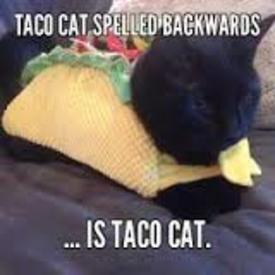Food scale for liquid?

srecupid
Posts: 660 Member
My food scale has an ml option. I just used it to make a piña colada. I'm wondering if that would be accurate for liquid or if it's basically just spewing the grams number in ml? Seems easier than dirtying a measurement cup
0
Replies
-
Other than for pure water (where 1 ml=1 g), it isn't accurate3
-
It's just spewing the number of grams and calling it milliliters. That said, weigh 1 cup once. Then you know the density and can forever more weigh that liquid instead of having to bother with cups.2
-
It's no so much that it's inaccurate, but that it's a scam. Only water weighs 1 gram per milliliter (some other liquids too, but never mind), the difference can be large or small, significant or insignificant, but the thing is that weight and volume are two differerent things and you can't measure volume by weighing it.
Weighing liquids is easier than using measuring cups/spoons, yes, but you need to use values that are based on weight, not on volume.1 -
My scale has a ml setting for water and for milk, although I cannot find what sort of milk it is for.0
-
If you want to weigh milk, I suggest using the grams setting and finding the USDA Nutrient Database info like this one:
https://ndb.nal.usda.gov/ndb/foods/show/180?manu=&fgcd=0 -
A pint's a pound the world around but only for water.0
-
This content has been removed.
-
No Fairlife or Carbmaster though it seems. A saiyan warrior needs his protein.If you want to weigh milk, I suggest using the grams setting and finding the USDA Nutrient Database info like this one:
https://ndb.nal.usda.gov/ndb/foods/show/180?manu=&fgcd=
Yeah, I compared this one to 200 mL of 2% Fairlife, which weighed in at 199 grams and found the following:
Prorated Fairlife:
100 calories
3.75 g fat
5 g carb
10.83 g protein
USDA protein fortified 2%
111 calories
3.94 fat
10.93 carb
7.86 protein0 -
1% milk has a density so close to 1 the difference is negligible. You can always weigh liquids, just divide by the density to get the amount in mL. (g / g/mL = mL)
If the density rounds to 1.00 (in the second decimal) I just logged it as 1:1.0 -
1% milk has a density so close to 1 the difference is negligible. You can always weigh liquids, just divide by the density to get the amount in mL. (g / g/mL = mL)
If the density rounds to 1.00 (in the second decimal) I just logged it as 1:1.
The key is finding the density. Many US food labels do not have grams for liquids. And if you already have to measure out 100 mL to find out how many grams it weighs, you might as well just use the mL (or ounces, the US norm) to figure out your calories.
0 -
I was teaching a general chemistry class and just saw this thread. I missed the chance to explain density. I feel cheated.5
-
I was teaching a general chemistry class and just saw this thread. I missed the chance to explain density. I feel cheated.
Well, if it makes you feel any better, I'm a chemist who works in an environmental testing laboratory... 1% milk has a density so close to 1 the difference is negligible. You can always weigh liquids, just divide by the density to get the amount in mL. (g / g/mL = mL)
1% milk has a density so close to 1 the difference is negligible. You can always weigh liquids, just divide by the density to get the amount in mL. (g / g/mL = mL)
If the density rounds to 1.00 (in the second decimal) I just logged it as 1:1.
The key is finding the density. Many US food labels do not have grams for liquids. And if you already have to measure out 100 mL to find out how many grams it weighs, you might as well just use the mL (or ounces, the US norm) to figure out your calories.
True enough, but then again the only caloric liquid I consumed in volumes greater than 1-2 tbsp was milk anyway. And that is easily available . Although one can calculate density easily enough and create a cheat sheet for frequently used foods. I did that for ice cream at one point. 1
. Although one can calculate density easily enough and create a cheat sheet for frequently used foods. I did that for ice cream at one point. 1 -
I haven't seen anyone mention using a graduated cylinder or pipette to get the accurate volume before weighing. So I'm on the fence.0 -
Pour some mercury in there...that'll show it who's boss.1
-
I haven't seen anyone mention using a graduated cylinder or pipette to get the accurate volume before weighing. So I'm on the fence.
They only count if they're either Class A TD or calibrated to be traceable to NIST...
2 -
I was teaching a general chemistry class and just saw this thread. I missed the chance to explain density. I feel cheated.
Well, if it makes you feel any better, I'm a chemist who works in an environmental testing laboratory... 1% milk has a density so close to 1 the difference is negligible. You can always weigh liquids, just divide by the density to get the amount in mL. (g / g/mL = mL)
1% milk has a density so close to 1 the difference is negligible. You can always weigh liquids, just divide by the density to get the amount in mL. (g / g/mL = mL)
If the density rounds to 1.00 (in the second decimal) I just logged it as 1:1.
The key is finding the density. Many US food labels do not have grams for liquids. And if you already have to measure out 100 mL to find out how many grams it weighs, you might as well just use the mL (or ounces, the US norm) to figure out your calories.
True enough, but then again the only caloric liquid I consumed in volumes greater than 1-2 tbsp was milk anyway. And that is easily available . Although one can calculate density easily enough and create a cheat sheet for frequently used foods. I did that for ice cream at one point.
. Although one can calculate density easily enough and create a cheat sheet for frequently used foods. I did that for ice cream at one point.
Yeah, I'm about the same when it comes to limiting the types of caloric liquids I ingest. I like your ice cream cheat sheet 0
0 -
I haven't seen anyone mention using a graduated cylinder or pipette to get the accurate volume before weighing. So I'm on the fence.
Ha!
I have to confess that chemistry is the one class I dropped in high school because it left me completely stymied and I was failing miserably. My teacher told me "I have no idea what is going on but you just don't get it." It's the only thing that kept me from an honors diploma When I got to college I took physics because it seemed easier. (Then I roomed with pharmacy majors and heard all about their organic chem woes.) 0
When I got to college I took physics because it seemed easier. (Then I roomed with pharmacy majors and heard all about their organic chem woes.) 0 -
I always thought it was permissible to use cups for liquid measuring.0
-
-
I have measuring cups that are labeled 1cup but one will only hold 238 ml of water vs 240 ml of water, what gives?0
-
I haven't seen anyone mention using a graduated cylinder or pipette to get the accurate volume before weighing. So I'm on the fence.
I prefer volumetric flasks. 0
0 -
This content has been removed.
-
Alatariel75 wrote: »
It's no more or less accurate if you know the density. But it usually involves less math.1 -
ummijaaz560 wrote: »I have measuring cups that are labeled 1cup but one will only hold 238 ml of water vs 240 ml of water, what gives?
Pretty sure that's a US measure, where a cup is 8oz (though I could have that wrong, I don't do ounces well). In Australia a standard cup measure is 250ml.
It's really better to go by ml than cups as you will be getting a more accurate measure.
Unless you are following a recipe that states something like "this recipe uses standard Australian measurments, 1 cup =250ml".
Hmm, some quite good stuff on here in both metric and imperial: http://www.taste.com.au/how+to/articles/369/weights+measurement+charts/#convers0
This discussion has been closed.
Categories
- All Categories
- 1.4M Health, Wellness and Goals
- 397K Introduce Yourself
- 44.2K Getting Started
- 260.9K Health and Weight Loss
- 176.3K Food and Nutrition
- 47.6K Recipes
- 232.8K Fitness and Exercise
- 456 Sleep, Mindfulness and Overall Wellness
- 6.5K Goal: Maintaining Weight
- 8.7K Goal: Gaining Weight and Body Building
- 153.3K Motivation and Support
- 8.3K Challenges
- 1.3K Debate Club
- 96.5K Chit-Chat
- 2.6K Fun and Games
- 4.5K MyFitnessPal Information
- 16 News and Announcements
- 18 MyFitnessPal Academy
- 1.4K Feature Suggestions and Ideas
- 3.1K MyFitnessPal Tech Support Questions












